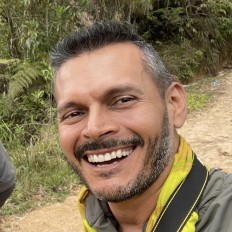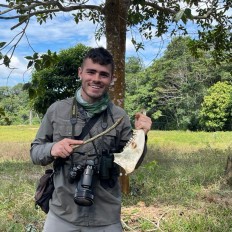Top species
- Scarlet-crowned Barbet (Capito aurovirens)
- Cocha Antshrike (Thamnophilus praecox)
- Peruvian Warbling-Antbird (Hypocnemis peruviana)
- Silvered Antbird (Sclateria naevia)
- Plumbeous Antbird (Myrmelastes hyperythrus)
- White-shouldered Antbird (Akletos melanoceps)
- Long-billed Woodcreeper (Nasica longirostris)
- Euler's Flycatcher (Lathrotriccus euleri)
- Drab Water Tyrant (Ochthornis littoralis)
List up to ca. 25 species that:
• have a limited distribution range and/or are rare on a global level
• are most sought-after by birdwatchers at this site
• and are relatively easy to see at this site (year-round or seasonally)
| Scarlet-crowned Barbet (Capito aurovirens) | |
| Cocha Antshrike (Thamnophilus praecox) | |
| Peruvian Warbling-Antbird (Hypocnemis peruviana) | |
| Silvered Antbird (Sclateria naevia) | |
| Plumbeous Antbird (Myrmelastes hyperythrus) | |
| White-shouldered Antbird (Akletos melanoceps) | |
| Long-billed Woodcreeper (Nasica longirostris) | |
| Euler's Flycatcher (Lathrotriccus euleri) | |
| Drab Water Tyrant (Ochthornis littoralis) |
Euler's Flycatcher (Lathrotriccus euleri) was added by Jorge Muñoz García (2023-06-28 15:32:49)
Long-billed Woodcreeper (Nasica longirostris) was added by Jorge Muñoz García (2023-06-28 15:32:33)
White-shouldered Antbird (Akletos melanoceps) was added by Jorge Muñoz García (2023-06-28 15:32:25)
Silvered Antbird (Sclateria naevia) was added by Jorge Muñoz García (2023-06-28 15:31:31)
Peruvian Warbling-Antbird (Hypocnemis peruviana) was added by Jorge Muñoz García (2023-06-28 15:30:21)
Scarlet-crowned Barbet (Capito aurovirens) was added by Jorge Muñoz García (2023-06-28 15:29:52)
Cocha Antshrike (Thamnophilus praecox) was added by Jorge Muñoz García (2023-06-28 15:23:51)
Drab Water Tyrant (Ochthornis littoralis) was added by Jorge Muñoz García (2023-06-28 15:23:35)
Plumbeous Antbird (Myrmelastes hyperythrus) was added by Jorge Muñoz García (2023-06-28 15:22:16)



